We have now officially entered the 2021 Atlantic Hurricane Season, which will run through November and is likely to wreak serious havoc. Scientists and researchers from Colorado State University (CSU), Tropical Storm Risk (TSR), North Carolina State University (NCSU), and AccuWeather expect above normal activity, projecting 12 to 15 tropical storm events, according to Allianz Global Corporate & Specialty’s (AGCS) Atlantic Hurricane Season Outlook 2021. The report notes that an above average season is typically characterized by seven to nine storms reaching hurricane strength and two to four becoming major hurricanes.
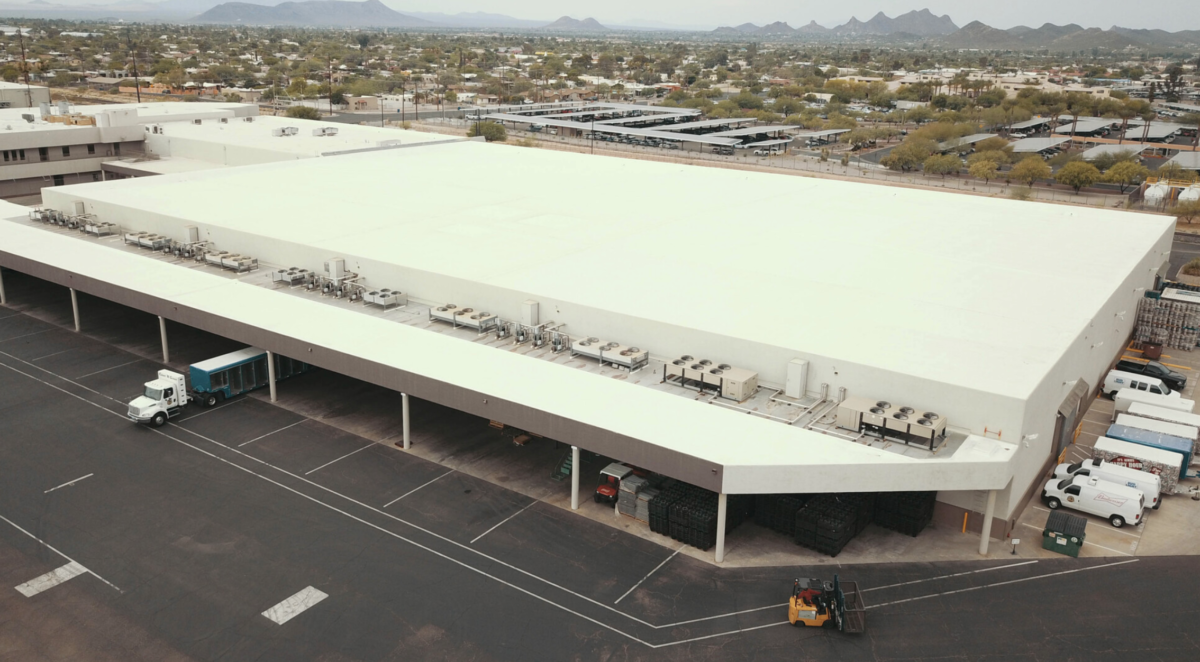
For commercial building owners and operators, storms and hurricanes remain a big concern. The damage incurred by the not-so-distant Hurricane Laura, and others, in 2020 is still top-of-mind. Undoubtedly, storms and hurricanes have been steadily growing in both intensity and frequency over the past several years and the physical and financial damage they bring can be catastrophic. As a result, many commercial facility owners are increasingly reexamining their roofing to ensure their structures are protected from possible damage. This represents an important opportunity for contractors to step up and provide weather-resistant solutions to their commercial customers.
One cost-effective roofing option resilient to wind, water and inclement weather is spray foam roofing. Not only is the material proven in the face of serious storm events, but it is also an optimal re-roof solution that may be applied directly overtop an existing roof, saving facility owners both time and money.
About Spray Foam Roofing
Spray polyurethane foam (SPF) roofing is ideal for a wide range of commercial, agricultural, industrial and residential applications over most new and retrofit roofing substrates. The rigid material is a high density, closed-cell spray foam variety at around 2.8 pounds per cubic foot. As roofing, spray foam provides a protective layer and uniquely acts as a thermal insulator, air barrier, vapor retarder and a waterproofing solution.
The roofing system locks every portion of the roof into place and eliminates the need for mechanical fasteners. The material may be utilized when the roof deck is of an unusual configuration or shape or when a sloped application is required to provide controlled drainage (in addition to being ideal for flat roofs of regular shapes).
The material’s adhesion qualities make it particularly ideal in hurricane prone regions including the Southeast, Gulf Coast and Puerto Rico, as well as in locations where severe weather cycling, storms, wind, hail and other conditions frequently arise. The durable, monolithic membrane that spray foam creates over the roof offers a compressive strength of approximately 40 to 55 pounds per square inch. It changes little with time and, when properly maintained, lasts 30 years or more.
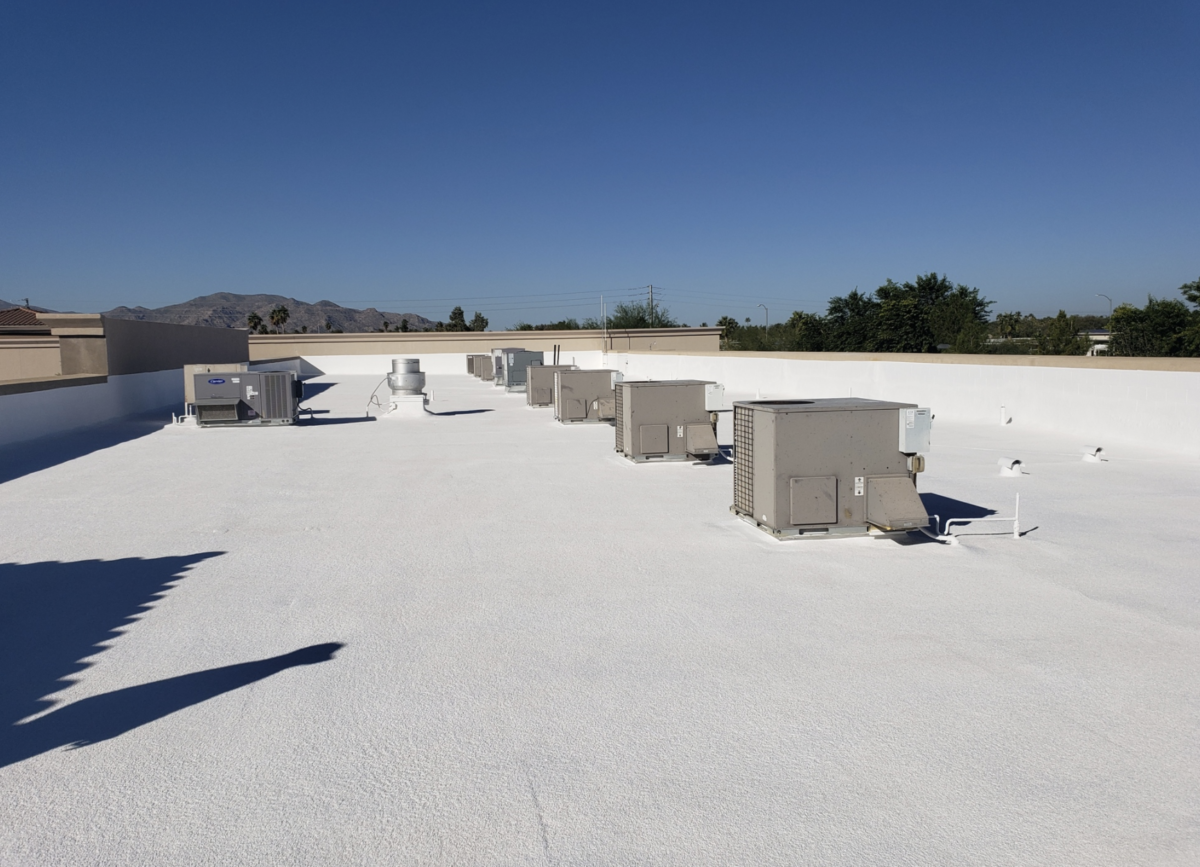
Spray foam roofing increases wind uplift resistance when installed to the roof substrate and, when applied to concrete, wind uplift protection is even stronger. Some high-performance spray foams also demonstrate wind uplift resistance by meeting the High Velocity Hurricane Zone (HVHZ) criteria of the Florida Building Code.
As a roofing solution, spray foam also resists peeling failure, which is a result of wind pulling flashings and copings away from a roof’s edges, which can ultimately lead to devastating damage to the structure. Additionally, the material’s ability to withstand leaks due to hail is also unsurpassed.
In a notable review of the material’s real-life performance, the National Institute of Standards and Technology (NIST) reviewed roof damage following Hurricane Katrina and discovered that buildings roofed with spray foam performed well without blow-off of the SPF or damage to flashings. NIST’s 2006 report (Performance of Physical Structures in Hurricane Katrina and Hurricane Rita: A Reconnaissance Report) found only one of the examined SPF roofs had incurred notable damage and concluded that spray foam kept the roofs intact, prevented moisture from entering the buildings, and protected the structures from hail and debris.
Use as Temporary Post-Storm Solution
If a storm has passed through a region and affected commercial facility roofs, damaging them, spray foam roofing may also be utilized as a temporary solution. For example, contractors addressing roofs where portions of shingles or metal deck have blown off during a hurricane or severe weather event often apply spray foam roofing over the damaged area to keep the roof intact, and to lessen water damage and protect the structure’s interiors and property in the interim until the full roof can be replaced.
Energy Efficiency
In addition to the physical and financial impacts of Earth’s intensifying weather on commercial facilities, it also dramatically influences their energy consumption and cost. Whether extreme heat or extreme cold, rising energy bills are impacting the bottom line of many owners.
Equally important to its weather resistance capabilities, spray foam also prevents heat transfer through the roof deck, minimizes the escape of conditioned air and, in turn, dramatically reduces energy bills for the life of the roof. In fact, spray foam roofing’s seamless insulating and sealing capabilities can help reduce a building’s energy consumption up to 40 percent. It is precisely this energy performance that has led to spray foam roofing, as well as its sister solution, spray foam insulation (which is a FEMA class 5 material when applied in walls, ceilings and floors), increasingly being selected for use in commercial structures designed to achieve net zero energy.
Educating and Preparing Commercial Customers
Roofing contractors are encouraged to take the growing number of storms seriously. The continued progression toward increasingly serious weather events has not let up in quite some time. The need for commercial property owners to prepare their properties as best they can for storms is greater than ever and they are relying on the industry’s experts to help them navigate their roofing options.
About the author:Dave Feitl is VP Global Roofing and Western USA SPF Sales with Huntsman Building Solutions, a leading global manufacturer of spray polyurethane foam roofing and insulation. The company’s solutions are utilized to optimize commercial and residential structures worldwide in both new construction and retrofit applications. Visit Huntsman Building Solutions at www.huntsmanbuildingsolutions.com and contact Dave Feitl at [email protected].

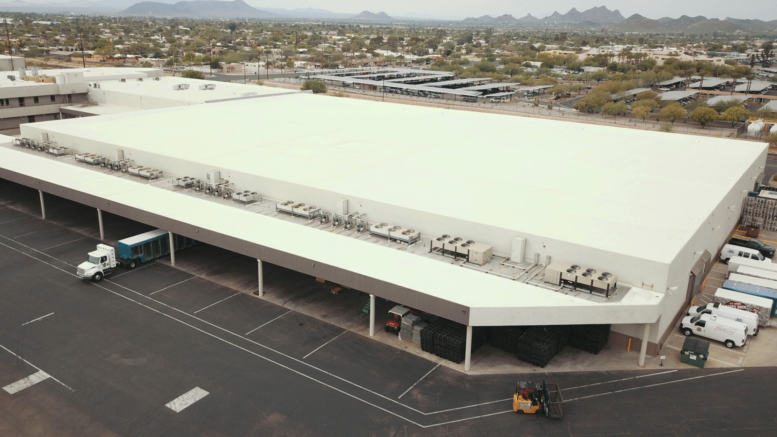
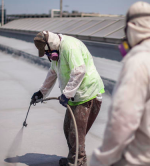

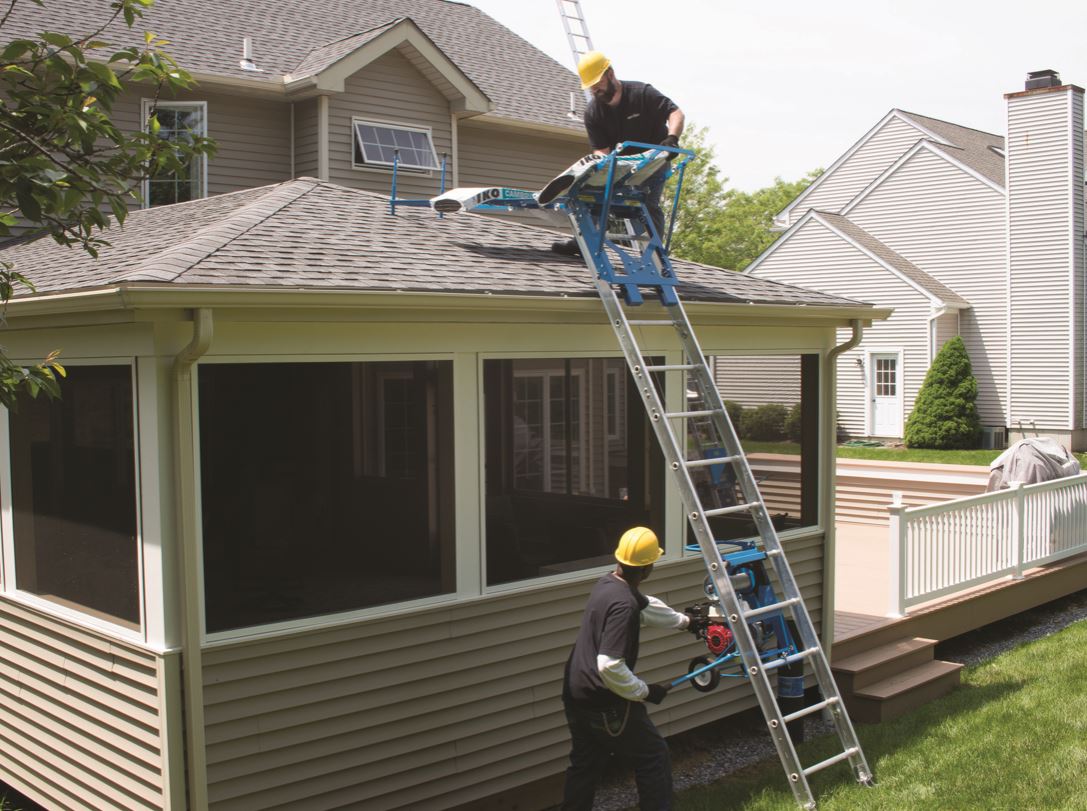
Be the first to comment on "Spray Foam Roofing Protects Against Intensifying Storms"